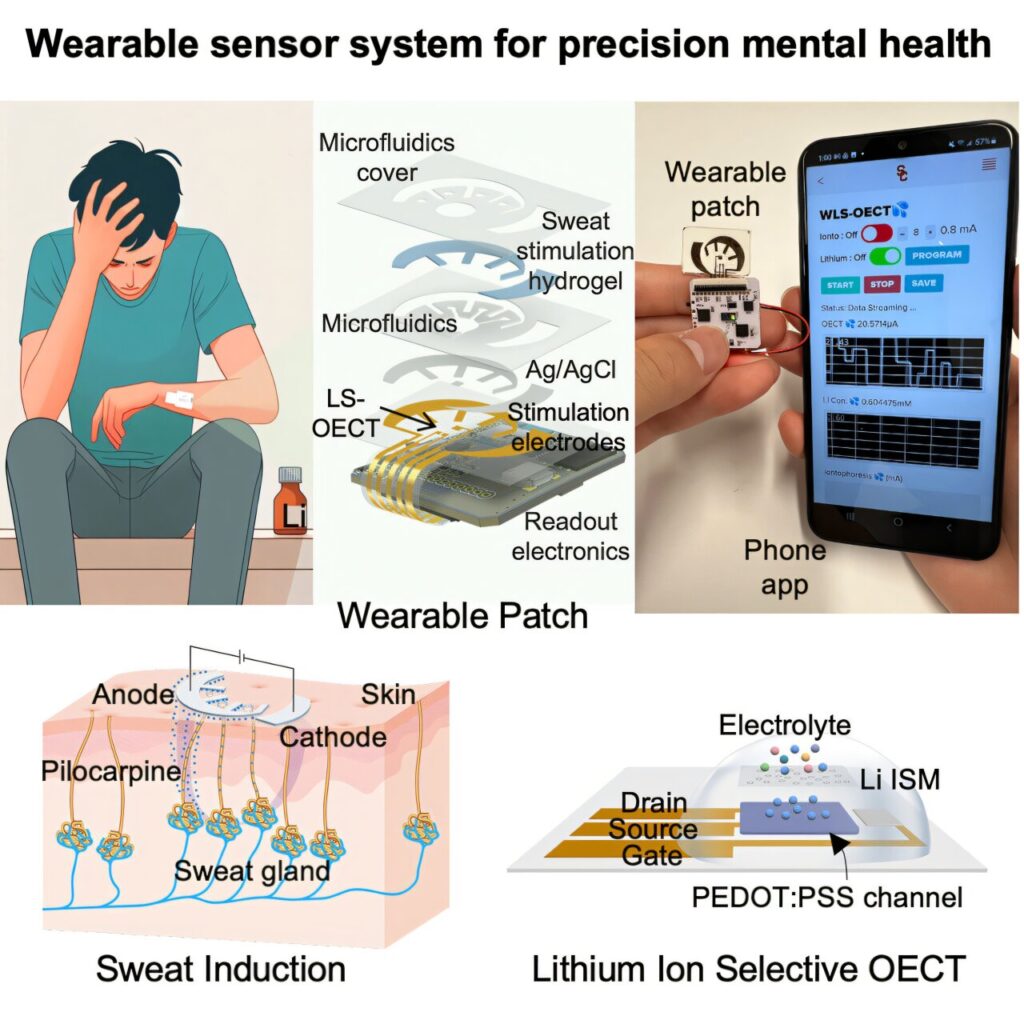
A groundbreaking wearable sensor developed by researchers at the University of Southern California (USC) promises to transform the way bipolar disorder patients monitor their lithium levels. This innovative device, which tracks medication levels through sweat, aims to provide a more convenient and noninvasive alternative to traditional blood draws.
The announcement comes as lithium remains a cornerstone in the treatment of bipolar disorder, despite its narrow therapeutic window. While effective, incorrect dosages can lead to severe side effects, including kidney and thyroid damage, or even death. Currently, lithium levels must be regularly monitored through blood tests, a process that is often inconvenient and painful for patients.
Innovative Approach to Lithium Monitoring
Leading the charge in this technological advancement is Yasser Khan, a professor at USC’s Ming Hsieh Department of Electrical and Computer Engineering. Khan, who heads the USC Khan Lab, has focused on creating a sensor that eliminates the need for blood draws entirely. The team’s findings are detailed in the paper, “Wearable organic-electrochemical-transistor-based lithium sensor for precision mental health,” published in the journal Device.
“Our goal was to create an easy-to-use sensor that bypasses the need for blood draws entirely,” Khan explained. The sensor identifies sweat as an ideal medium for monitoring lithium levels, as it can be collected noninvasively and provides real-time data.
How the Sensor Works
The wearable device incorporates a skin-safe, iontophoresis-based system that induces sweat without requiring physical exertion. Within minutes, the device collects data and transmits it to a smartphone app, allowing patients to track their lithium levels from home.
At the heart of this innovation is the use of organic electrochemical transistors (OECTs), which are specifically designed for lithium detection. These transistors convert ionic signals in liquid into readable electronic data. Unlike conventional OECTs, the USC-developed sensor features a fully printed design using a novel material formulation tailored for lithium ions.
“We developed the entire lithium monitoring system—from the OECT-based sensor patch and on-demand sweat induction to the readout electronics and smartphone app—using a simple, scalable, and cost-effective fabrication process,” said Mohammad Shafiqul Islam, the study’s first author and a Ph.D. student in the Khan Lab.
Clinical Trials and Patient Feedback
The sensor’s potential extends beyond the laboratory. In collaboration with psychiatrist Adam Frank, MD, Ph.D., at the Keck School of Medicine, the device has been tested on patients. During pilot trials, Khan’s team worked with Frank and his patients to validate the sensor’s effectiveness. Sweat samples collected by the wearable device were successfully matched with data from traditional commercial sensors.
Participating patients expressed relief at the prospect of monitoring their health without repeated hospital visits. “The ability to noninvasively monitor lithium levels will improve care for patients taking lithium, who typically require regular blood draws,” Frank stated. “Being able to track these levels continuously over time will improve safety by allowing for medication dose adjustments that avoid side effects and potential medication toxicity.”
Future Developments and Implications
Looking ahead, the team plans to enhance the wearable system with artificial intelligence to automatically adjust lithium dosages, optimizing therapeutic benefits while minimizing toxicity risks. This development represents a significant step forward in personalized healthcare for bipolar disorder patients.
The move represents a broader trend in medical technology towards noninvasive monitoring solutions, which could potentially be applied to other medications and conditions. As the healthcare industry continues to evolve, innovations like the USC-developed sensor could pave the way for more accessible and personalized treatment options.
For more information, see the original study by Mohammad Shafiqul Islam et al, published in Device, DOI: 10.1016/j.device.2025.100862.





